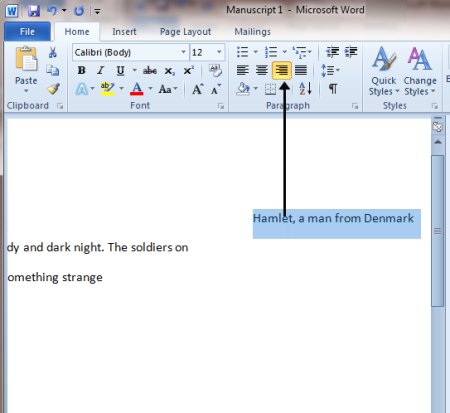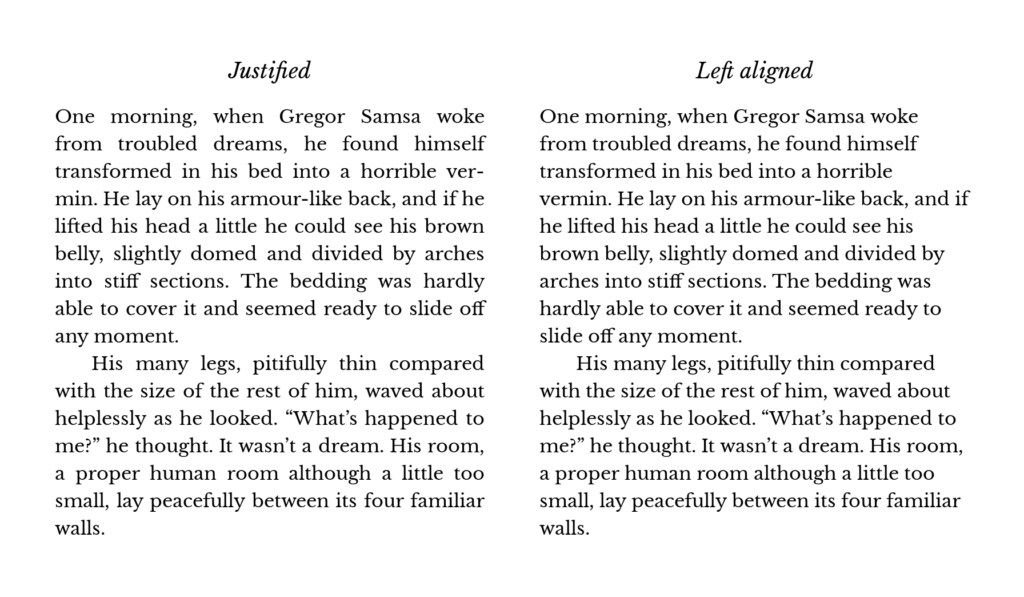Pages For Mac Align Text Left And Right On Same Line
/cyberlink-powerdirector-download-free-latest.html. This is a quick and dirty tip on how to have seemingly contradictory alignments on the same line. In Word, this trick is done with tabs. In a nutshell, you follow these steps:
- Make sure the paragraph is formatted as left-aligned.
- Display the Home tab of the ribbon.
- Click the small icon at the bottom-right of the Paragraph group. Word displays the Paragraph dialog box. (See Figure 1.)
- Click the Tabs button. Word displays the Tabs dialog box. (See Figure 2.)
- What you want to do is to insert a right-aligned tab near the right edge of the line. For instance, if 6.2 is near the right edge of the line, then insert 6.2 in the Tab Stop Position field. (This indicates you want the tab stop to be 6.2 inches from the left margin.)
- In the Alignment area, click Right. (This tells Word that this will be a right-aligned tab, just like you want.)
- Click on Set.
- Click on OK. Word closes the Tabs dialog box.
Figure 1. The Paragraph dialog box.
Figure 2. The Tabs dialog box.

Now you can type your text, pressing the Tab key between the information you want left-aligned and the information you want right-aligned. The right-aligned information will align at whatever horizontal point you specified in step 5. (Thus, if you used the example measurement of 6.2 inches, then your text—what you type after the Tab—will end at 6.2 inches from the left margin.)

- If you have your Formatting toolbar displayed the text alignment controls are just to the right of the Bold, Italic, Underline controls. They start with Left Align, Center, Right Align, and then comes the control you are after called Justify.
- What you want to do is to insert a right-aligned tab near the right edge of the line. For instance, if 6.2 is near the right edge of the line, then insert 6.2 in the Tab Stop Position field. (This indicates you want the tab stop to be 6.2 inches from the left margin.) In the Alignment area, click Right.
- A variation of JCBiggar's great solution is to skip the width and text-align for.alignright, but simply to float it to the right. The advantage of this is that it removes the concern that the inner elements have set margins or paddings, making the 33.33%. 3 exceed the 100% width of the containing element.
- The start line will also change if you change the flex-direction property — for example using row-reverse instead of row. In this next example I have items laid out with flex-direction: row-reverse and justify-content: flex-end. In a left to right language the items all line up on the left.
- Align and justify text in Pages on Mac You can adjust paragraphs in a page, column, table cell, text box, or shape so that text is aligned to the left or right, centered, or aligned on both the left and right (justified). You can also align text vertically in a text box, shape, or a table cell, column, or row.
Align Text Left And Right On Same Line Pages Mac
This trick works great if the information you are formatting is limited to a single line. As an example, this can easily work for a chapter name and page number in a header or footer. (You know; the chapter name appears at the left and the page number at the right.)
Align Text Right
In the ruler above your document, click where you want the right-most character of the right-aligned section to be. Then select the option that pops up: 'Add right tab-stop'. (In the example image in step 3, it is all the way at the right margin.).
Pages For Mac Align Text Left And Right On Same Lines
If you need to accomplish the same task for multiple lines, then it is best to use a small table with two or three cells. The left-most cell of the table can be for the left-aligned information, and the right-most cell can be used for right-aligned information. The center cell (if you choose to use one) is used for spacing purposes.